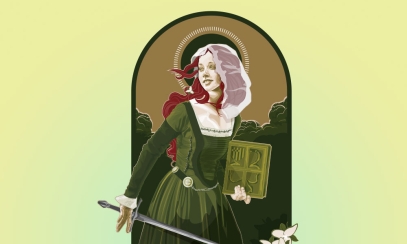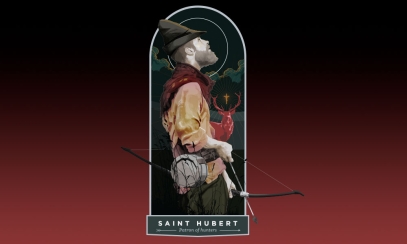
St. Joseph Calasanz
The Most Important Saint You’ve Never Heard of
The Most Important Saint You’ve Never Heard of
When most people think of saints associated with Catholic education, they immediately call to mind one of the greats, like St. Elizabeth Ann Seton or St. Thomas Aquinas. But there is an unsung hero in their midst, one whose contributions to learning and formation are truly second to none.
When most people think of saints associated with Catholic education, they immediately call to mind one of the greats, like St. Elizabeth Ann Seton or St. Thomas Aquinas. But there is an unsung hero in their midst, one whose contributions to learning and formation are truly second to none.
St. Joseph Calasanz was born more than 450 years ago in Spain, the son of a noble family. He was educated in the classical tradition and, when his local school became unable to keep pace with his intellect, he was sent on to study at some of his country’s finest institutions. He began to pursue a vocation in the priesthood and, largely due to his intellect, he was sought after by many prominent bishops for some of the most important and complex ministries of his time.
After making his mark in the Church, however, St. Joseph made an unusual decision for his time. He resigned from all his positions, gave away his inheritance and moved to Rome. While there, he would develop an idea that was centuries ahead of its time.
Across Italy, St. Joseph observed masses of poor, uneducated children who were growing into poor, uneducated adults. He used his Church connections to develop, for the first time in modern European history, a free school that was open to everyone. No child had to pay tuition or fret over other costs; St. Joseph and his fellow leaders saw to it that high-quality learning opportunities were available to any youngster who wanted them.
Poor children across Rome seized the chance to learn and grow in St. Joseph’s free school. More than 1,000 students enrolled, and similar programs were established in other regions of Italy. Eventually, the pope approved the first order of priests dedicated to primary school education, known as the Piarists.
But there were important challenges ahead.
St. Joseph’s work to educate the poor was viewed with fear and suspicion among the upper classes, who dreaded possible social and economic disruption. Worse still, St. Joseph was a close friend of Galileo Galilei, whose theories about the earth and sun were still extremely controversial among Church leaders. Coupled with several other controversies surrounding the Piarists, these factors spelled doom for St. Joseph. Just a few years before the end of his life, he was arrested and publicly shamed as part of the Inquisition, he was removed as head of his order and the Piarists were ultimately suppressed.
When St. Joseph died, his life’s work was gone. It had evaporated into smoke during the darkest days of the 1600s, but it was not dead. In the following decades, the Piarists returned to work and began laying important foundations for the future. Their work spread across Europe and ultimately educated such people as Mozart, Schubert and Goya. Ultimately, the Piarists provided the model for free public education that is still in widespread use today.
St. Joseph Calasanz was canonized in 1767 and we remember his many contributions to the well-being of children in a special way.



